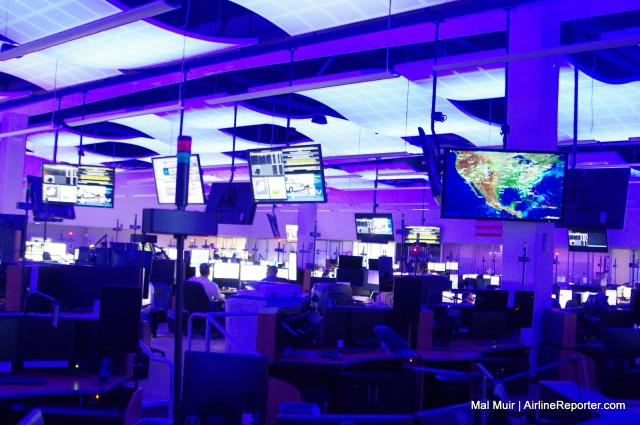
The Southwest Airlines NOC with screens showing airline operations
In May of this year, Southwest Airlines unveiled a new crown jewel at their Dallas Love Field headquarters: their Network Operations Control (NOC). If the employees are the heart of the airline, the brain that keeps the airline moving day in and day out is the NOC.
During Media Day, we were given a tour of the NOC — it almost felt like being in Batman’s lair.
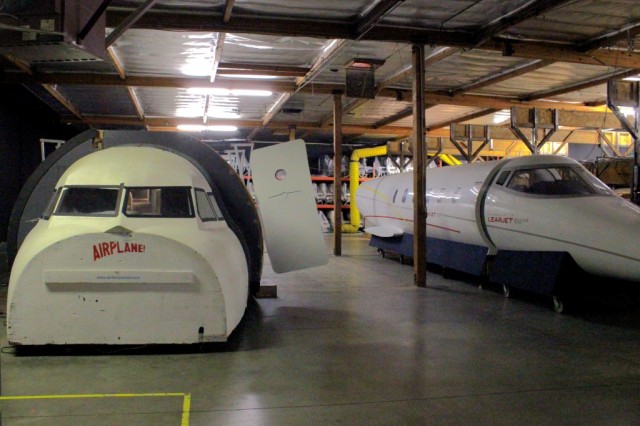
At the front of the first narrowbody set is the flight deck from the movie “Airplane!” – Photo: Ben Granucci | NYCAviation
Story written by Ben Granucci and appears on NYCAviation.com
In 1998, Talaat Captan was a writer and movie producer shooting scenes in an airport for the movie Ground Control, starring Kiefer Sutherland. After experiencing great difficulty coordinating the logistics involved with filming in an active airport, Mr. Captan knew that there had to be a better way. A self described aviation enthusiast himself, he founded Air Hollywood shortly after filming wrapped. The goal of Air Hollywood is to have a studio where all types of aviation scenes can be produced in a film-friendly environment. We recently visited the Air Hollywood studios and got to see all that they had to offer.
Right this way, please!
Right this way, please!
We started with a tour of their collection of full aircraft sets. Air Hollywood has several complete aircraft interiors that can be quickly and easily reconfigured to not only provide a wide variety of interior looks, but also permit filming from any angle necessary. Instead of replicating particular types of aircraft exactly, they have three more generic interiors. As we entered the building, we stepped into a scenery piece that was built to look like a jet bridge. Just like you would board an airliner, we walked down the ramp and turned a corner to see what looked to be the entrance door of a aircraft.
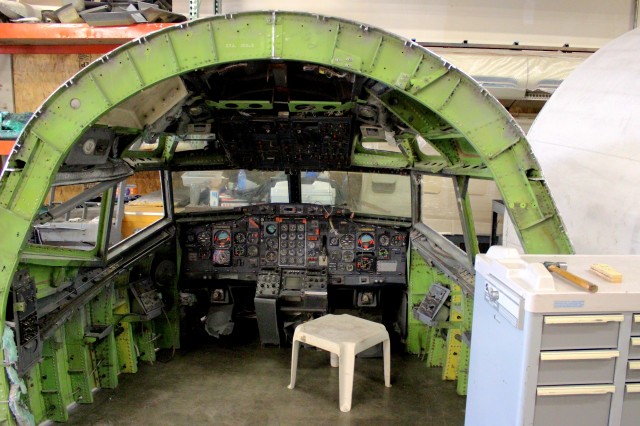
Once upon a time, this was the business end of a 727. Today it is being rebuilt into a fully functional movie set complete with switches that click and lights that glow – Photo: Ben Granucci | NYCAviation.com
However this was not an aircraft at all, but rather the studio’s widebody set. With a shell made of wood and an interior made of aircraft cabin panels, this piece of scenery was somewhere between a Boeing 767 and an Airbus A330 in width. In the condition that we toured it, it was equipped with a small business class cabin and a slightly larger economy class cabin.
All components of the cabin can be removed and replaced in a matter of minutes versus the several hours that a real aircraft would require. The entire aircraft interior, including the seats, were all purchased used. Mr. Captan explained to us that new components are cost prohibitive. For example, one first class seat alone can cost upwards of $30,000 when purchased as new, while the used cost is a fraction of that.
Continue reading Behind the Scenes of Airliners in Movies – Air Hollywood on NYCAviation.com
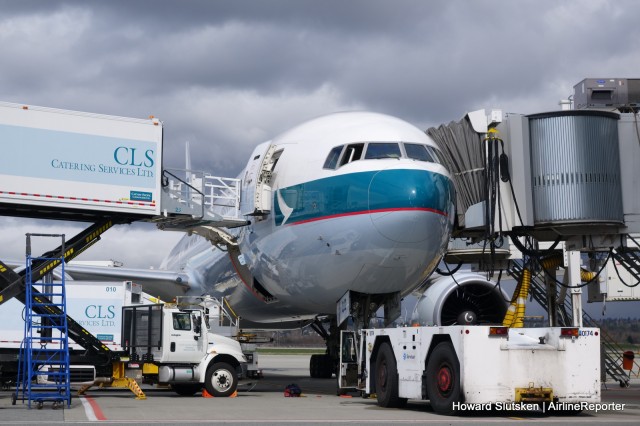
A Cathay Pacific Boeing 777-300 in the midst of a turnaround at YVR. You can see the yellow air conditioning hoses under the bridge.
Your flight has landed, and the plane is pulling up to the gate. You’re ready to spring into action as soon as you hear the “we’re stopped” chime. But instead of jumping up and waiting in the aisle, why don’t you relax in your window seat, and look outside? You do have a window seat, don’t you? There’s quite the dance of people and equipment happening, all to service the plane and get it ready for its next flight.
The turnaround actually begins long before the plane lands. Equipment is pre-positioned at the gate, supplies and catering are prepared, and ramp and terminal staff get ready for the arrival. As the flight turns onto the taxiway after landing, the crew gets their gate assignment from ground control, or in the case of a major airport, ramp control. The plane’s Auxiliary Power Unit (APU) will have been started to provide an electrical and pneumatic supply after the engines are shut down. The APU is a small jet engine, generally located in the tail cone. One of the first airliners with an APU was the tri-jet Boeing 727, and its APU was located in the wing root.
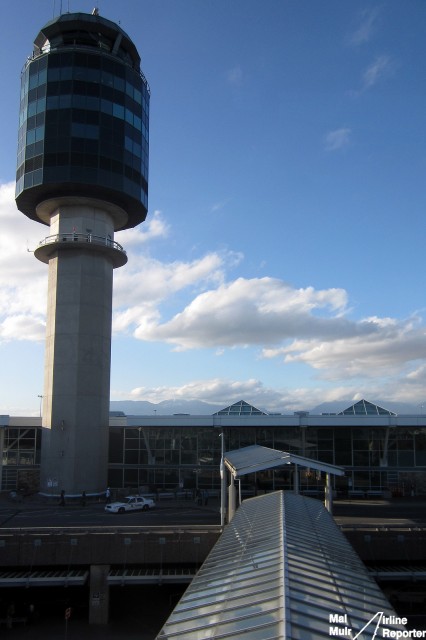
Vancouver’s unique tower dominates the airport skyline – Photo: Mal Muir | AirlineReporter.com
If you are a big AvGeek, then the chances are you have listed in on air traffic control (ATC) somehow. Be it onboard a United flight using their famous Channel 9, listening online using LiveATC, or through a scanner while plane spotting, it’s a familiar sound. But have you ever wondered what life is like from the other side of the microphone? Wouldn’t it be great to see what an airport looks like from the top of the tower, or what it is like to work inside an area control center? Recently Nav Canada gave me that exact opportunity at Vancouver International Airport (YVR) and I wanted to share.
Nav Canada, a not-for-profit private company, controls the airspace above Canada similar to the FAA in the United States. Vancouver Tower stands tall above the airport at around 140m tall (460ft) and has 360-degree views of the entire area. Although the day I visited the tower did not have the best weather (the cloud deck was really low, unfortunately) the view of the airport was still impressive. On a clear day, you can see all the way to the mountains north of the city (towards Grouse) or down to Victoria in the south. But I was more there for the view inside than the clouds and mountains outside.




